The Burning Wire (9) (Lincoln Rhyme Novel)
4.4
-
5,500 ratings
From New York Times bestselling author Jeffery Deaver—Lincoln Rhyme is back, and on the trail of a killer whose weapon of choice cripples New York City with fear. Now a major television series starring Russel Hornsby, Arielle Kebbel, and Michael Imperioli.
The weapon is invisible and omnipresent. Without it, modern society grinds to a halt. It is electricity. The killer harnesses and steers huge arc flashes with voltage so high and heat so searing that steel melts and his victims are set afire.
When the first explosion occurs in broad daylight, reducing a city bus to a pile of molten metal, officials fear terrorism. Rhyme, a world-class forensic criminologist known for his successful apprehension of the most devious criminals, is immediately tapped for the investigation. Long a quadriplegic, he assembles NYPD detective Amelia Sachs and officer Ron Pulaski as his eyes, ears and legs on crime sites, and FBI agent Fred Dellray as his undercover man on the street. As the attacks continue across the city at a sickening pace, and terrifying demand letters begin appearing, the team works desperately against time and with maddeningly little forensic evidence to try to find the killer. Or is it killers…?
Meanwhile, Rhyme is consulting on another high-profile investigation in Mexico with a most coveted quarry in his crosshairs: the hired killer known as the Watchmaker, one of the few criminals to have eluded Rhyme’s net.
Juggling two massive investigations against a cruel ticking clock takes a toll on Rhyme’s health. Soon Rhyme is fighting on yet another front—and his determination to work despite his physical limitations threatens to drive away his closest allies when he needs them most…
Read more
Kindle
$12.99
Available instantly
Audiobook
$0.00
with membership trial
Hardcover
$19.57
Paperback
$11.39
Ships from
Amazon.com
Payment
Secure transaction
ISBN-10
1982140275
ISBN-13
978-1982140274
Print length
480 pages
Language
English
Publisher
Simon & Schuster
Publication date
October 21, 2019
Dimensions
5.5 x 1.1 x 8.38 inches
Item weight
13.6 ounces
Popular Highlights in this book
How much amperage does it take to kill you? At a hundred milliamps of AC current, your heart will fibrillate and you’ll die. That’s one tenth of one amp. Your typical Rite Aid hair dryer pulls ten amps.
Highlighted by 135 Kindle readers
Thomas Edison would have approved. What do you mean?
Highlighted by 108 Kindle readers
Life was one big disability; the question was simple: What did we do about it?
Highlighted by 106 Kindle readers
Product details
ASIN :
B003BHM854
File size :
2399 KB
Text-to-speech :
Enabled
Screen reader :
Supported
Enhanced typesetting :
Enabled
X-Ray :
Enabled
Word wise :
Enabled
Editorial Reviews
“There is no thriller writer today like Jeffery Deaver.” —San Jose Mercury News
“Shocking twists . . . electrically charged.” —Publishers Weekly (starred review)
About the Author
Jeffery Deaver is the #1 internationally bestselling author of forty-four novels, three collections of short stories, and a nonfiction law book. His books are sold in 150 countries and translated into twenty-five languages. His first novel featuring Lincoln Rhyme, The Bone Collector, was made into a major motion picture starring Denzel Washington and Angelina Jolie and a hit television series on NBC. He’s received or been shortlisted for a number of awards around the world, including Novel of the Year by the International Thriller Writers and the Steel Dagger from the Crime Writers’ Association in the United Kingdom. In 2014, he was the recipient of three lifetime achievement awards. He has been named a Grand Master by Mystery Writers of America.
Sample
Chapter 1
SITTING IN THE control center of Algonquin Consolidated Power and Light’s sprawling complex on the East River in Queens, New York, the morning supervisor frowned at the pulsing red words on his computer screen.
Critical failure.
Below them was frozen the exact time: 11:20:20:003 a.m.
He lowered his cardboard coffee cup, blue and white with stiff depictions of Greek athletes on it, and sat up in his creaky swivel chair.
The power company control center employees sat in front of individual workstations, like air traffic controllers. The large room was brightly lit and dominated by a massive flat-screen monitor, reporting on the flow of electricity throughout the power grid known as the Northeastern Interconnection, which provided electrical service in New York, Pennsylvania, New Jersey and Connecticut. The architecture and decor of the control center were quite modern—if the year were 1960.
The supervisor squinted up at the board, which showed the juice arriving from generating plants around the country: steam turbines, reactors and the hydroelectric dam at Niagara Falls. In one tiny portion of the spaghetti depicting these electrical lines, something was wrong. A red circle was flashing.
Critical failure . . .
“What’s up?” the supervisor asked. A gray-haired man with a taut belly under his short-sleeved white shirt and thirty years’ experience in the electricity business, he was mostly curious. While critical-incident indicator lights came on from time to time, actual critical incidents were very rare.
A young technician replied, “Says we have total breaker separation. MH-Twelve.”
Dark, unmanned and grimy, Algonquin Consolidated Substation 12, located in Harlem—the “MH” for Manhattan—was a major area substation. It received 138,000 volts and fed the juice through transformers, which stepped it down to 10 percent of that level, divided it up and sent it on its way.
Additional words now popped onto the big screen, glowing red beneath the time and the stark report of the critical failure.
MH-12 offline.
The supervisor typed on his computer, recalling the days when this work was done with radio and telephone and insulated switches, amid a smell of oil and brass and hot Bakelite. He read the dense, complicated scroll of text. He spoke softly, as if to himself, “The breakers opened? Why? The load’s normal.”
Another message appeared.
MH-12 offline. RR to affected service area from MH-17, MH-10, MH-13, NJ-18.
“We’ve got load rerouting,” somebody called unnecessarily.
In the suburbs and countryside the grid is clearly visible—those bare overhead high-tension wires and power poles and service lines running into your house. When a line goes down, there’s little difficulty finding and fixing the problem. In many cities, though, like New York, the electricity flows underground, in insulated cables. Because the insulation degrades after time and suffers groundwater damage, resulting in shorts and loss of service, power companies rely on double or even triple redundancy in the grid. When substation MH-12 went down, the computer automatically began filling customer demand by rerouting the juice from other locations.
“No dropouts, no brownouts,” another tech called.
Electricity in the grid is like water coming into a house from a single main pipe and flowing out through many open faucets. When one is closed, the pressure in the others increases. Electricity’s the same, though it moves a lot more quickly than water—nearly 700 million miles an hour. And because New York City demanded a lot of power, the voltages—the electrical equivalent of water pressure—in the substations doing the extra work were running high.
But the system was built to handle this and the voltage indicators were still in the green.
What was troubling the supervisor, though, was why the circuit breakers in MH-12 had separated in the first place. The most common reason for a substation’s breakers to pop is either a short circuit or unusually high demand at peak times—early morning, both rush hours and early evening, or when the temperature soars and greedy air conditioners demand their juice.
None of those was the case at 11:20:20:003 a.m. on this comfortable April day.
“Get a troubleman over to MH-Twelve. Could be a bum cable. Or a short in the—”
Just then a second red light began to flash.
Critical failure. NJ-18 offline.
Another area substation, located near Paramus, New Jersey, had gone down. It was one of those taking up the slack in Manhattan-12’s absence.
The supervisor made a sound, half laugh, half cough. A perplexed frown screwed into his face. “What the hell’s going on? The load’s within tolerances.”
“Sensors and indicators all functioning,” one technician called.
“SCADA problem?” the supervisor called. Algonquin’s power empire was overseen by a sophisticated Supervisory Control and Data Acquisition program, running on huge Unix computers. The legendary 2003 Northeast Blackout, the largest ever in North America, was caused in part by a series of computer software errors. Today’s systems wouldn’t let that disaster happen again but that wasn’t to say a different computer screwup couldn’t occur.
“I don’t know,” one of his assistants said slowly. “But I’d think it’d have to be. Diagnostics say there’s no physical problem with the lines or switchgear.”
The supervisor stared at the screen, waited for the next logical step: letting them know which new substation—or stations—would kick in to fill the gap created by the loss of NJ-18.
But no such message appeared.
The three Manhattan substations, 17, 10 and 13, continued alone in providing juice to two service areas of the city that would otherwise be dark. The SCADA program wasn’t doing what it should have: bringing in power from other stations to help. Now the amount of electricity flowing into and out of each of those three stations was growing dramatically.
The supervisor rubbed his beard and, after waiting, futilely, for another substation to come online, ordered his senior assistant, “Manually move supply from Q-Fourteen into the eastern service area of MH-Twelve.”
“Yessir.”
After a moment the supervisor snapped, “No, now.”
“Hm. I’m trying.”
“Trying. What do you mean, trying?” The task involved simple keyboard strokes.
“The switchgear’s not responding.”
“Impossible!” The supervisor walked down several short steps to the technician’s computer. He typed commands he knew in his sleep.
Nothing.
The voltage indicators were at the end of the green. Yellow loomed.
“This isn’t good,” somebody muttered. “This’s a problem.”
The supervisor ran back to his desk and dropped into his chair. His granola bar and Greek athlete cup fell to the floor.
And then another domino fell. A third red dot, like a bull’s-eye on a target, began to throb, and in its aloof manner the SCADA computer reported:
Critical failure.
MH-17 offline.
“No, not another one!” somebody whispered.
And, as before, no other substation stepped up to help satisfy the voracious demands of New Yorkers for energy. Two substations were doing the work of five. The temperature of the electric wires into and out of those stations was growing, and the voltage level bars on the big screen were well into the yellow.
MH-12 offline. NJ-18 offline. MH-17 offline. RR to affected service areas from MH-10, MH-13.
The supervisor snapped, “Get more supply into those areas. I don’t care how you do it. Anywhere.”
A woman at a nearby control booth sat up fast. “I’ve got forty K I’m running through feeder lines down from the Bronx.”
Forty thousand volts wasn’t much and it would be tricky to move it through feeder lines, which were meant for about a third that much voltage.
Somebody else was able to bring some juice down from Connecticut.
The voltage indicator bars continued to rise but more slowly now.
Maybe they had this under control. “More!”
But then the woman stealing power from the Bronx said in a choking voice, “Wait, the transmission’s reduced itself to twenty thousand. I don’t know why.”
This was happening throughout the region. As soon as a tech was able to bring in a bit more current to relieve the pressure, the supply from another location dried up.
And all of this drama was unfolding at breathtaking speeds.
700 million miles an hour . . .
And then yet another red circle, another bullet wound.
Critical failure.
MH-13 offline.
A whisper: “This can’t be happening.”
MH-12 offline. NJ-18 offline. MH-17 offline. MH-13 offline. RR to affected service areas from MH-10.
This was the equivalent of a huge reservoir of water trying to shoot through a single tiny spigot, like the kind that squirts cold water out of a refrigerator door. The voltage surging into MH-10, located in an old building on West Fifty-seventh Street in the Clinton neighborhood of Manhattan, was four or five times normal load and growing. The circuit breakers would pop at any moment, averting an explosion and a fire, but returning a good portion of Midtown to colonial times.
“North seems to be working better. Try the north, get some juice from the north. Try Massachusetts.”
“I’ve got some: fifty, sixty K. From Putnam.”
“Good.”
And then: “Oh, Jesus, Lord!” somebody cried.
Read more
About the authors
Jeffery Deaver
Jeffery Deaver is an international number-one bestselling author. His novels have appeared on bestseller lists around the world. His books are sold in 150 countries and translated into over twenty-five languages. He has served two terms as president of Mystery Writers of America, and was recently named a Grand Master of MWA, whose ranks include Agatha Christie, Ellery Queen, Mary Higgins Clark and Walter Mosely.
The author of over forty novels, three collections of short stories and a nonfiction law book, and a lyricist of a country-western album, he’s received or been shortlisted for dozens of awards. His "The Bodies Left Behind" was named Novel of the Year by the International Thriller Writers association, and his Lincoln Rhyme thriller "The Broken Window" and a stand-alone, "Edge," were also nominated for that prize. "The Garden of Beasts" won the Steel Dagger from the Crime Writers Association in England. He’s also been nominated for eight Edgar Awards by the MWA.
Deaver has been honored with the Lifetime Achievement Award by the Bouchercon World Mystery Convention, the Strand Magazine’s Lifetime Achievement Award and the Raymond Chandler Lifetime Achievement Award in Italy.
His book "A Maiden�’s Grave" was made into an HBO movie starring James Garner and Marlee Matlin, and his novel "The Bone Collector" was a feature release from Universal Pictures, starring Denzel Washington and Angelina Jolie. Lifetime aired an adaptation of his "The Devil’s Teardrop." NBC television recently aired the nine-episode prime-time series, "Lincoln Rhyme: Hunt for the Bone Collector."
You can find out more about Jeffery on his website www.jefferydeaver.com, Facebook page facebook.com/JefferyDeaver, and follow him on Twitter @JefferyDeaver.
Read more
Reviews
Customer reviews
4.4 out of 5
5,500 global ratings

Julia A. Andrews
5
A High Voltage Thriller
Reviewed in the United States on June 2, 2010
Verified Purchase
Readers (and for that matter moviegoers) familiar with Deaver's earlier work, particularly "The Bone Collector" will be delighted at the return of Lincoln Rhyme. There is simply no other major character in a thriller series like Lincoln Rhyme. A brillant forensic criminologist (who just happens to be a quadriplegic) Rhyme's assembles a crack team of investigators (including Amelia Sachs)to deal with the sabotage of an electricity grid substation, the subsequent lethal explosion and the threat of further, similiar acts of terror. At the same time Lincoln is deeply involved in tracking down an old adversary, an asassin known as the "Watchman".
Deavers main gift as a writer is an ability to show the intricacies of a detailed complex investigation, including a substantial amount of fascinating background information without letting the story pace suffer. The subtleties of characterization are secondary to the action line. In saying this, I do NOT mean to suggest they are simple cardboard figures. I mean the underlying success of this book is the driving urgency of the plot.
Although a long time fan of Lincoln Rhyme another Deaver character, Kathryn Dance, comes in a very close second to him. If you have not already met her I highly recommend the previous two Kathryn Dance books
Read more
21 people found this helpful
Paul S. Person
5
Electicity -- It's Everywhere
Reviewed in the United States on April 6, 2024
Verified Purchase
Lincoln Rhyme and friends are up against a man who manipulates high-voltage electrical power to kill people. All, it appears, in the name of revenge and ecology. But if the truth turns out to be a bit different, the danger is real: electric distribution networks, if attacked, can be very dangerous. The book also contains a great satire of SIGINT -- that is, reading other people's electronic mail and drawing conclusions that are about as far from reality as they can get. Terrifying, page-turning, solution a /big/ surprise, and a satire of "intelligence" -- what's not to like?
Read more
2 people found this helpful
Buddy and Naca
5
watchmaker
Reviewed in the United States on February 28, 2024
Verified Purchase
I was pleased the author brought the watchmaker story line to a close (but maybe not) without it feeling “jabbed” just to close a story line. Good read.
2 people found this helpful
Linda
5
Wonderful always!
Reviewed in the United States on April 10, 2024
Verified Purchase
I found the story very interesting and it certainly got me thinking and doing some research oN electricty. Funny how we just take things for granite. I was pleased with the ending and am looking forward to the next book.
Quentin Ball
5
Review
Reviewed in the United States on July 8, 2024
Verified Purchase
Exhilarating! Not always clear well defined paths (somewhat frustrating at times) but clearly eventually defined to make me desire to read more future and past books. Plots tend toward complicated directions with too many twists and turns. I, fortunately, am a master at figuring out most plots but simplicity might be more entertaining and less stressful in a world with to much stress.
Read more
Top Jeffery Deaver titles

The Steel Kiss: Lincoln Rhyme Book 12 (Lincoln Rhyme Thrillers)
4.3
-
15,078
$2.55

The Coffin Dancer: A Novel (2) (Lincoln Rhyme Novel)
4.5
-
5,617
$1.31
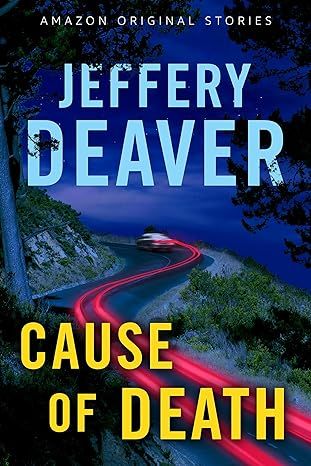
Cause of Death
4.2
-
5,166
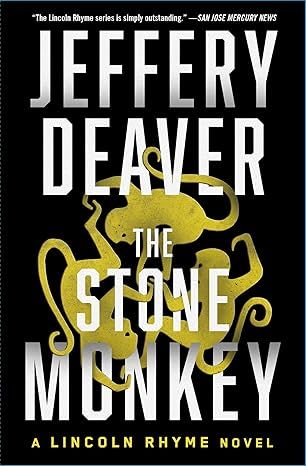
The Stone Monkey: A Lincoln Rhyme Novel (4)
4.5
-
4,802
$1.24
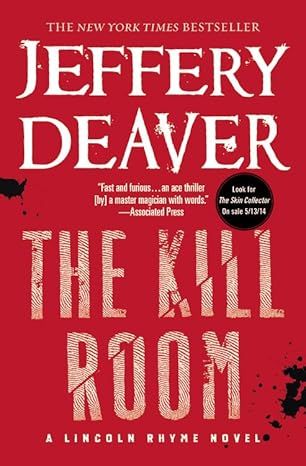
The Kill Room (Lincoln Rhyme)
4.3
-
6,193
$5.29

The Burial Hour (A Lincoln Rhyme Novel, 14)
4.2
-
12,268
$9.99
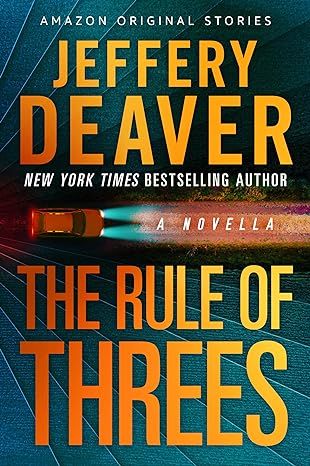
The Rule of Threes: A Novella
4
-
10,459
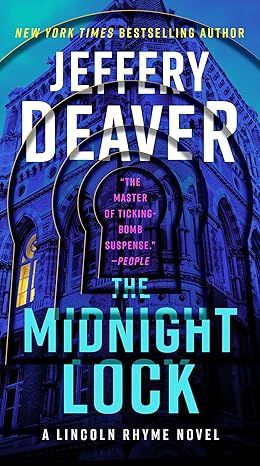
The Midnight Lock (Lincoln Rhyme Novel)
4.5
-
10,344
$2.05
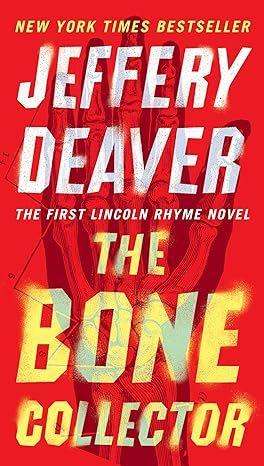
The Bone Collector (Lincoln Rhyme Novel)
4.5
-
7,183
$7.99
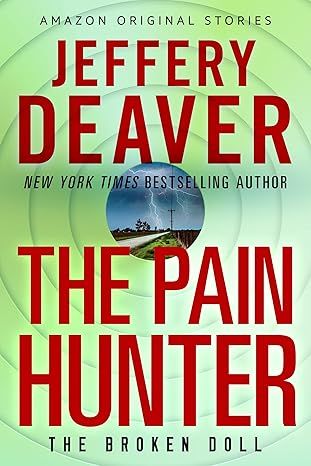
The Pain Hunter (The Broken Doll Book 1)
4.2
-
5,263

Shallow Graves
4
-
1,304
$3.82
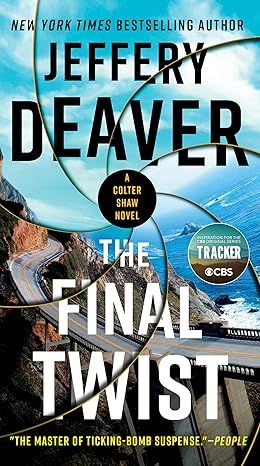
The Final Twist (A Colter Shaw Novel)
4.5
-
8,168
$1.97
Best Sellers

The Tuscan Child
4.2
-
100,022
$8.39
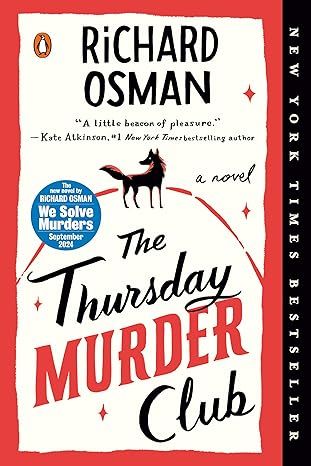
The Thursday Murder Club: A Novel (A Thursday Murder Club Mystery)
4.3
-
155,575
$6.33
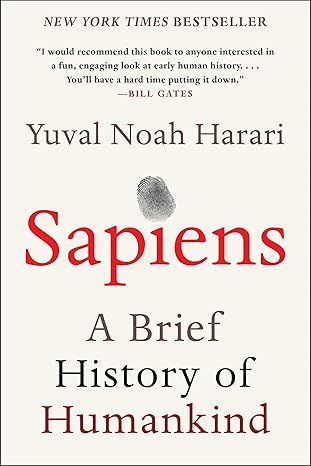
Sapiens: A Brief History of Humankind
4.6
-
140,302
$13.49

The Butterfly Garden (The Collector, 1)
4.3
-
88,556
$9.59

Things We Hide from the Light (Knockemout Series, 2)
4.4
-
94,890
$11.66

The Last Thing He Told Me: A Novel
4.3
-
154,085
$2.99

The Perfect Marriage: A Completely Gripping Psychological Suspense
4.3
-
143,196
$9.47
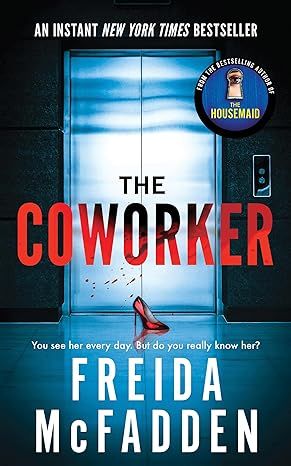
The Coworker
4.1
-
80,003
$13.48

First Lie Wins: A Novel (Random House Large Print)
4.3
-
54,062
$14.99

Mile High (Windy City Series Book 1)
4.4
-
59,745
$16.19

Layla
4.2
-
107,613
$8.99
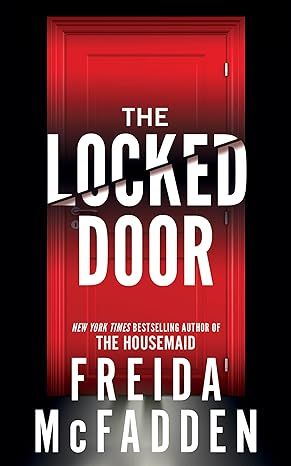
The Locked Door
4.4
-
94,673
$8.53

